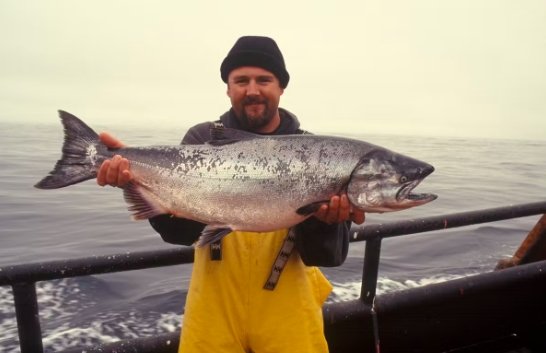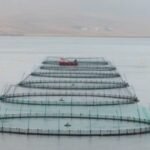Scotland’s salmon industry stands to gain big from the new UK-India free trade agreement as tariffs drop to zero on premium fish exports. Leaders in the sector say this opens doors to one of the world’s largest fish markets just as Prime Minister Keir Starmer wraps up his visit to India today.
The UK-India Free Trade Deal Unlocks New Markets
The agreement, finalized earlier this year, cuts trade barriers between the two nations and boosts exports in key areas like food and beverages. Scottish salmon, already the UK’s top food export, now has a clear path to reach Indian consumers in big cities where demand for healthy proteins is on the rise.
This deal comes at a perfect time. With global trade tensions elsewhere, the UK seeks stable partners like India, whose economy is set to become the third largest by 2028. Experts point out that removing the 30 percent tariff makes Scottish Atlantic salmon competitive against local options and other imports.
The timing aligns with Starmer’s two-day trip to Mumbai and Delhi, where he met Prime Minister Narendra Modi to discuss deeper ties. Their talks highlighted how the pact will create jobs and spur growth on both sides, with salmon exports playing a starring role for Scotland.

Why Indian Consumers Will Love Scottish Salmon
India consumes nearly 12 million tonnes of fish each year, but most comes from local sources. Premium imports, however, are gaining traction in urban areas like Delhi and Mumbai, where people seek high-quality, nutritious foods. Scottish salmon fits right in as a rich source of omega-3s and sustainable protein.
Salmon Scotland chief executive Tavish Scott called the deal a game-changer during Starmer’s visit. He noted that the fish’s fresh taste and health benefits could appeal to India’s growing middle class, who are eating out more and trying international cuisines.
To make this work, the industry plans to partner with Indian distributors. They aim to educate buyers on proper handling and cooking to build trust. Early tests show promise, as similar premium seafood from Norway has already carved out a niche.
Here are some key reasons why this export push could succeed:
- Zero tariffs make pricing attractive for high-end retailers.
- Rising health awareness in India boosts demand for lean proteins like salmon.
- Scotland’s reputation for sustainable farming adds value in eco-conscious markets.
- Logistics improvements under the deal speed up fresh deliveries.
Recent Boom in Asian Salmon Exports
Scotland’s salmon exports to Asia have surged lately, setting the stage for India. Last year, sales to China jumped 60 percent, while volumes to Taiwan more than doubled. Overall, international sales topped £840 million, with projections for £1 billion this year alone.
This growth stems from strong demand in fast-growing economies. In the first half of 2025, exports hit £528 million, driven by premium products. The UK-India deal builds on this momentum, as India joins the list of nearly 50 countries buying Scottish salmon.
Challenges remain, like adapting to local tastes. Some Indians prefer milder flavors, so recipes blending salmon with spices could help. Still, the sector’s track record in Asia shows it can adapt quickly.
| Export Destination | 2024 Value (£ million) | Growth Rate (%) | Notes |
|---|---|---|---|
| China | 200 | +60 | Largest Asian buyer |
| Taiwan | 150 | +100 | Doubled volumes |
| USA | 225 | +10 | Key non-Asian market |
| Total Asia | 500 | +40 | Rapid expansion |
| Projected India | 50 (2026 est.) | N/A | New opportunity |
Economic Boost for Scottish Coastal Communities
The influx of new markets means more jobs and investment back home. Salmon farming supports thousands in rural Scotland, from processing plants to feed suppliers. With exports on track to break records, communities along the west coast could see wages rise and new facilities open.
This ties into broader UK goals under the FTA, which promises up to £25.5 billion in added trade value. For salmon alone, India could add millions annually, helping offset any global slowdowns. Leaders stress that sustainable practices will keep the industry strong for years.
Related events, like the recent EU approval for more Indian seafood into the UK, show mutual benefits. It creates a balanced trade flow that supports both sides’ fishing sectors.
Challenges and Future Steps Ahead
While exciting, entering India requires careful planning. Regulatory hurdles, like food safety standards, must align fully. The industry is working with UK and Indian officials to smooth this out.
Climate factors also play a role, as warming oceans affect salmon stocks worldwide. Scotland’s farms focus on welfare to stay ahead. Long-term, experts predict the deal could double Asian exports by 2030 if trends hold.
Overall, this positions Scottish salmon as a bridge between two nations. As ties strengthen, watch for more stories of success from this vibrant trade link.
Share your thoughts on how this deal might change dinner tables in India or boost Scotland’s economy. Comment below and spread the word to friends interested in global trade news.


















